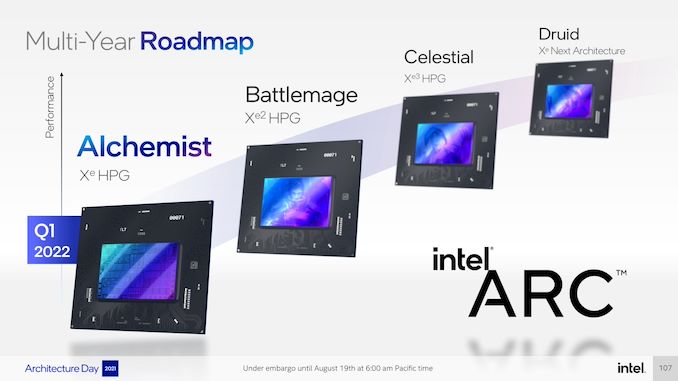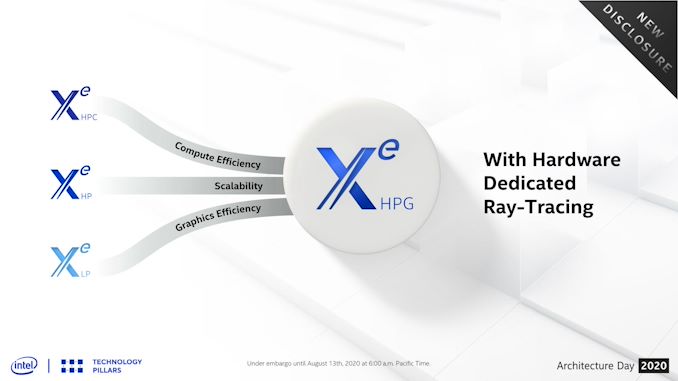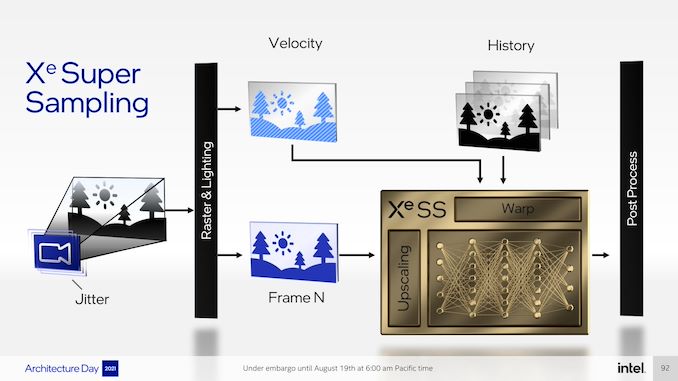Today is when Intel does its third-quarter 2021 financial disclosures, and there’s one little tidbit in the earnings presentation about its upcoming new discrete GPU offerings. The earnings are usually a chance to wave the flag of innovation about what’s to come, and this time around Intel is confirming that its first-generation discrete graphics with the Xe-HPG architecture will be on shelves in Q1 2022.
Intel has slowly been disclosing the features for its discrete gaming graphics offerings. Earlier this year, the company announced the branding for its next-gen graphics, called Arc, and with that the first four generations of products: Alchemist, Battlemage, Celestial, and Druid. It’s easy to see that we’re going ABCD here. Technically at that disclosure, in August 2021, Intel did state that Alchemist will be coming in Q1, the reaffirmation of the date today in the financial disclosures indicates that they’re staying as close to this date as possible.
Intel has previously confirmed that Alchemist will be fully DirectX 12 Ultimate compliant – meaning that alongside RT, it will offer variable-rate shading, mesh shaders, and sampler feedback. This will make it comparable in core graphics features to current-generation AMD and NVIDIA hardware. Although it has taken a few years now to come to fruition, Intel has made it clear for a while now that the company has intended to become a viable third player in the discrete graphics space. Intel’s odyssey, as previous marketing efforts have dubbed it, has been driven primarily by developing the Xe family of GPU microarchitectures, as well as the GPUs based on those architectures. Xe-LP was the first out the door last year, as part of the Tiger Lake family of CPUs and the DG1 discrete GPU. Other Xe family architectures include Xe-HP for servers and Xe-HPC for supercomputers and other high-performance compute environments.
The fundamental building block of Alchemist is the Xe Core. For manufacturing, Intel is turning to TSMC’s N6 process to do it. Given Intel’s Q1’22 release timeframe, Intel’s Alchemist GPUs will almost certainly be the most advanced consumer GPUs on the market with respect to manufacturing technology. Alchemist will be going up against AMD’s Navi 2x chips built on N7, and NVIDIA’s Ampere GA10x chips built on Samsung 8LPP. That said, as AMD can attest to, there’s more to being competitive in the consumer GPU market than just having a better process node. In conjunction with the use of TSMC’s N6 process, Intel is reporting that they’ve improved both their power efficiency (performance-per-watt) and their clockspeeds at a given voltage by 50% compared to Xe-LP. Note that this is the sum total of all of their improvements – process, logic, circuit, and architecture – so it’s not clear how much of this comes from the jump to TSMC N6 from Intel 10SF, and how much comes from other optimizations.
Exactly what performance level and pricing Intel will be pitching its discrete graphics to is currently unknown. The Q1 launch window puts CES (held the first week of January) as a good spot to say something more.
Related Reading
- Intel Video Cards Get a Brand Name: Arc, Starting with "Alchemist" in Q1 2022
- Intel Architecture Day 2021: A Sneak Peek At The Xe-HPG GPU Architecture
- Intel Architecture Day 2021: Intel Unveils XeSS Image Upscaling Technology
from AnandTech https://ift.tt/3C64wDV
via IFTTT






No comments:
Post a Comment